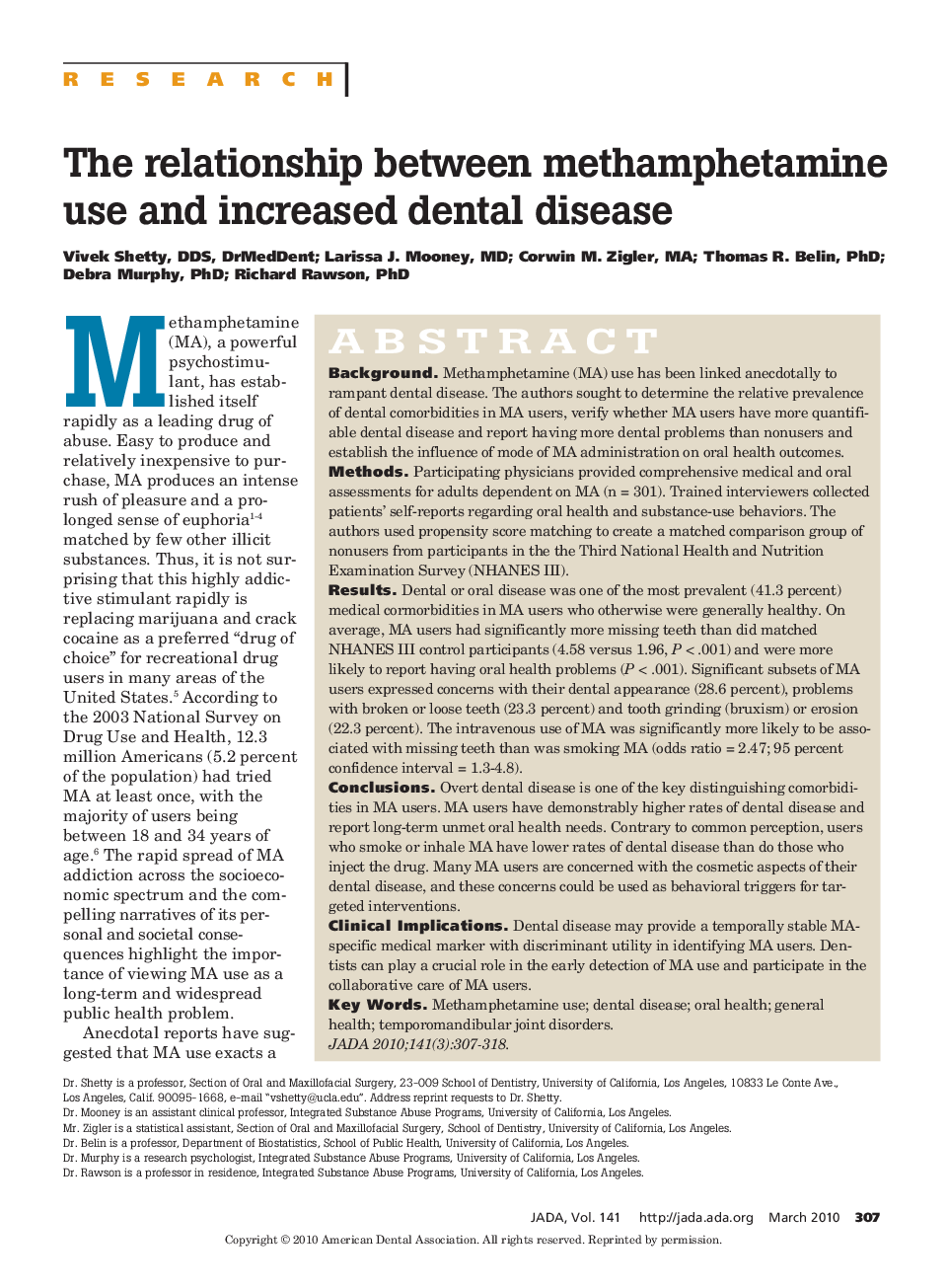| Article ID | Journal | Published Year | Pages | File Type |
|---|---|---|---|---|
| 3138777 | The Journal of the American Dental Association | 2010 | 12 Pages |
ABSTRACTBackgroundMethamphetamine (MA) use has been linked anecdotally to rampant dental disease. The authors sought to determine the relative prevalence of dental comorbidities in MA users, verify whether MA users have more quantifiable dental disease and report having more dental problems than nonusers and establish the influence of mode of MA administration on oral health outcomes.MethodsParticipating physicians provided comprehensive medical and oral assessments for adults dependent on MA (n = 301). Trained interviewers collected patients' self-reports regarding oral health and substance-use behaviors. The authors used propensity score matching to create a matched comparison group of nonusers from participants in the the Third National Health and Nutrition Examination Survey (NHANES III).ResultsDental or oral disease was one of the most prevalent (41.3 percent) medical cormorbidities in MA users who otherwise were generally healthy. On average, MA users had significantly more missing teeth than did matched NHANES III control participants (4.58 versus 1.96, P < .001) and were more likely to report having oral health problems (P < .001). Significant subsets of MA users expressed concerns with their dental appearance (28.6 percent), problems with broken or loose teeth (23.3 percent) and tooth grinding (bruxism) or erosion (22.3 percent). The intravenous use of MA was significantly more likely to be associated with missing teeth than was smoking MA (odds ratio = 2.47; 95 percent confidence interval = 1.3–4.8).ConclusionsOvert dental disease is one of the key distinguishing comorbidities in MA users. MA users have demonstrably higher rates of dental disease and report long-term unmet oral health needs. Contrary to common perception, users who smoke or inhale MA have lower rates of dental disease than do those who inject the drug. Many MA users are concerned with the cosmetic aspects of their dental disease, and these concerns could be used as behavioral triggers for targeted interventions.Clinical ImplicationsDental disease may provide a temporally stable MA-specific medical marker with discriminant utility in identifying MA users. Dentists can play a crucial role in the early detection of MA use and participate in the collaborative care of MA users.
